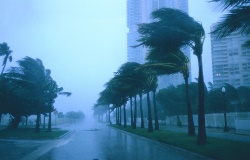Amwins Brokerage
As the nation's largest wholesale broker, our specialized expertise is yours to tap into — from unparalleled market access to value-added resources and intel.
Amwins Brokerage
As the nation's largest wholesale broker, our specialized expertise is yours to tap into — from unparalleled market access to value-added resources and intel.
Expertise. Marketplace clout.
Unparalleled resources.
That's the Amwins advantage.
As a retailer, you're responsible for navigating changing landscapes, regardless of your client's industry or coverage needs. At Amwins, we know the weight of these constant shifts in market conditions makes placing specialty insurance feel like an uphill battle. But you don't have to go it alone. Amwins Brokerage is adept at navigating these intricacies. Bring us your difficult placements — your complex, layered and niche accounts across all lines.
Our Brokerage divisions includes more than 425 teams nationwide. Through specialty practice groups, our brokers are constantly collaborating, sharing knowledge and solutions across teams and divisions. That means when you work with an Amwins broker, you have the combined expertise of our entire firm driving your success.
With the largest specialty insurance distribution platform in the industry, we stay on top of market conditions and trends to keep our retailers ahead of the game. The result? The value-added resources, market relationships, and solutions to get tough deals done.
CAT modeling + risk control resources
Our in-house team of actuaries licenses cutting-edge software to deliver catastrophe risk data analysis and the most accurate pricing possible.
Proprietary product development
Combining our product expertise, market clout and in-house facilities, we develop exclusive products that support the evolving needs of our clients and their insureds.
Data + analytics
By analyzing data from thousands of Amwins-placed accounts, we bring our clients valuable insight through tools such as benchmarking reports and price trends.
#1
largest wholesale broker in the U.S.
$23.8B
annual premium placements
1,200+
admitted, E&S and wholesale-only carrier relationships
Explore Amwins resources + insights
Stay up to date on emerging industry trends and topics.
Top Catastrophe Claim Tips for Severe Weather Season
Severe weather can be unpredictable and strike at any time. Help your clients be prepared in the event their property is damaged by a hurricane, tornado, hailstorm or similar disaster. We recommend considering the following tips to achieve fast, efficient handling of your claim.
Download a Claims Checklist for Severe Weather Damage
Prior to a claim
1. It is always a good idea to read through your policy and review coverage and exclusions prior to a claim so you will know what to expect. Keep an updated inventory of all of your property. Seemingly insignificant items can add up quickly and should be submitted for review and consideration.
2. Expedite claims handling and improve client service by requesting that an experienced Independent Adjuster be written into the policy. This can be agreed to and added by an endorsement.
3. Post your CAT plan of action (POA) and share with employees. When creating a POA, we suggest you:
- Create a list of cell phone numbers of designated CAT POA team members and employees for emergency communications
- Ensure that you have the following materials on hand: tarps, sand, sandbags, plywood, computer/equipment covers, generators, fuel, batteries, flashlights, cleaning supplies, etc.
- Designate CAT POA team members to secure indoor/outdoor property at each location and disconnect/unplug appropriate equipment prior to evacuation of the premises
- Choose local, reputable restoration companies and/or contractors and add them to your list of contacts – be sure to include claim reporting information on the list as well
- Consider a potential secondary location should it be necessary/possible to work off site temporarily
- Consider the use of an application such as “Group Me” for mass communication with employees
Note: Please note that the list provided above is not complete or exhaustive. You may need to adjust it according to your specific situation and needs.
After a claim occurs
4. Assess the damage to the best of your ability and be prepared to give an accurate description of the amount and type of damage. Make sure you state whether the premises were rendered inhabitable as a result of the damages. This will allow your company to send out an adjuster with the appropriate level of experience, based on the level of damage.
5. Notify your insurance carrier or agent as soon as possible. The insurance contract requires notification as soon as possible after a loss. Be sure to leave a telephone number where you can be contacted and a complete address of the location so the company can get an adjuster to the scene quickly. Be sure to stay in touch with your adjuster and respond to calls promptly. Catastrophes can generate hundreds of claims, so communication and cooperation is vital for a quick resolution to your claim.
6. Take the necessary steps to avoid or minimize the suspension of business. Costs incurred that reduce your business interruption loss may be covered under Extra Expense. Be familiar with your policy coverage before you suffer a loss.
7. Photograph damaged areas prior to making temporary repairs if possible. Doing so will strengthen your claim and help with the presentation of your loss. Make the temporary repairs necessary to prevent further damage, theft or vandalism. Repairs of this kind could include boarding up broken windows and covering holes in the roof. Mitigating your damage is usually a condition of coverage (your insurance will usually cover the reasonable cost of temporary repairs). DO NOT make permanent repairs to your damaged property unless the adjuster has reviewed your claim and given you permission to restore your property.
8. If you can, get one or two detailed estimates for permanent repairs from a reliable contractor and give these estimates to the adjuster. Beware of “fly-by-night” operators who often follow a storm into town. Check with the Better Business Bureau before doing business with any vendor you don’t know. Keep in mind that public adjusters are illegal in some states. We recommend knowing the reputable contractors and restoration companies in your area, who you prefer to use, before you suffer a loss.
9. Refrain from signing any contract for restoration or repairs prior to discussing it with your company adjuster. Your adjuster can play a key role in helping you avoid price gouging after a catastrophe, but he/she won’t be able to negotiate a reasonable price for services if you’ve already signed a contract. Remember your insurance company is NOT bound by the contracts you sign.
10. Prepare an inventory of all damaged or destroyed property for the adjuster. Be sure to keep a copy for your records, and be sure NOT to discard ANY items before the adjuster is given a reasonable amount of time to inspect them. Provide available cancelled checks, invoices, etc. that support the value of damaged or destroyed property.
11. Keep ALL receipts and invoices for EVERY expense you incur after the loss, including items such as tarps, boards, cleaning supplies, etc. These costs add up quickly and may help erode your deductible.
Watch out for unlicensed public adjusters
Unlicensed or unscrupulous persons may pose as adjusters or, being an adjuster, may pose a threat to consumers. Unlicensed public adjusters, in particular, may pose a problem since they don’t work for any company or company-adjusting firm. Unlicensed public adjusters have not demonstrated their competency to adjust claims nor have they posted the required surety bond. You are encouraged to report any such activity to local authorities.
Please caution any clients that, if they contract with an unlicensed public adjuster, they are authorizing the claim check to be made payable to both themselves or a mortgagee and the adjuster. Clients are encouraged to have their attorney review any public adjusting contract before signing.
- Natalie Dominguez, Amwins Brokerage in Atlanta, GA
- David Bailey, Amwins Brokerage in Dallas, TX
- Property
- Property & Casualty
More to Explore
Collaboration and market leverage for the win.
With less than three days to bind, a retailer with a large wood-frame podium project account on the Tampa Bay came to Amwins in need of builder’s risk coverage. The competitor’s quote had room for improvement in pricing, terms and conditions. Utilizing our exclusive property capacity, we were able to negotiate a very competitive $10M primary layer the next day.
When reviewing the account, it came to light that the competitor had only quoted 10% of the flood coverage required, set the expiration date two months shy of the term needed, and had a deductible twice the amount the insured could carry. We determined with the retailer that the best approach was to completely restructure the program.
In the end, we were able to secure $50M in primary with the flood limits, water damage deductible and expiration date the insured needed. For the excess layer, Amwins Bermuda called on a long-standing relationship with a Bermuda market to achieve the terms and limits needed at a competitive price.
Amwins’ teamwork, leverage in the marketplace and proprietary products allowed us to place this risk in just over 48 hours with substantial premium savings and enhancements to coverage.



